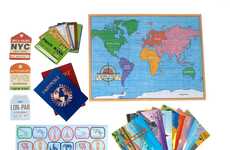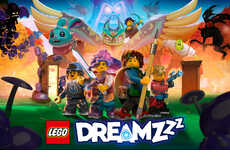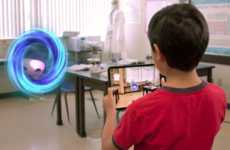
Alessandra Fumagalli Romario's Imaginary Language Encourages Kids
Kalin Ned — August 22, 2019 — Art & Design
'Imaginary Language' is the playful name of a project by Alessandra Fumagalli Romario — a graduate of the Royal College of Art, who was interested in promoting creativity through design. The range boasts a number of differently shaped tools that have a smooth surface and geometric shapes. Individuals, mainly "actors and children," can combine and build with these tools, ultimately flexing their creative muscles. While kids can stay entertained with the shapes and create a variety of objects with the different components, Alessandra Fumagalli Romario also makes her creations available to actors who can utilize the forms in their dramatic exercises.
'Imaginary Language' was the project the designer submitted for her graduation. As she stipulates in an interview with Dezeen, the collection of shapes is informed through Irving Biederman's psychological theory.
'Imaginary Language' was the project the designer submitted for her graduation. As she stipulates in an interview with Dezeen, the collection of shapes is informed through Irving Biederman's psychological theory.
Trend Themes
1. Design Tools for Creativity - The trend of design tools that promote creativity, like 'Imaginary Language,' presents opportunities for innovative products and experiences.
2. Multi-purpose Toys - The trend of multi-purpose toys that cater to both children and actors opens up possibilities for cross-industry collaborations and new forms of play.
3. Psychological Influences in Design - The trend of incorporating psychological theories into design, as seen in 'Imaginary Language,' offers opportunities for creating products that enhance psychological well-being and stimulate imagination.
Industry Implications
1. Toy Industry - The toy industry can explore the development of design toys that foster creativity and appeal to both children and actors.
2. Education and Training - The education and training industry can consider incorporating multi-purpose toys like 'Imaginary Language' into their programs to stimulate creativity and enhance experiential learning.
3. Design and Innovation - The design and innovation industry can leverage psychological theories and concepts to create products and experiences that drive creativity and imagination.
6.8
Score
Popularity
Activity
Freshness























